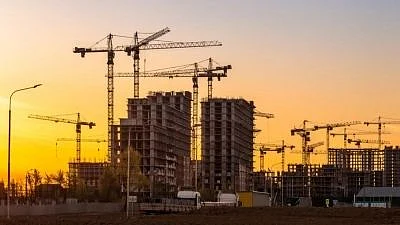As an urban dweller, you must have felt the scathing heat on your skin in a concrete cluster or an outdoor parking space, especially on a hot summer afternoon.
These effects can not only be ascribed to shifts in weather patterns but also to modifications in the local climate caused by urban structures, vegetation, water bodies, transport-generated heat, and accelerated energy consumption.
Urbanisation Threatens Temperature Rise in Cities
The embracing of rapid urbanisation for better lifestyles has led to mindless concretisation, proving to be one of the biggest threats to the outdoor temperature in cities.
Commonly known as the Urban Heat Island (UHI) effect, this localised phenomenon causes a rise in the land surface temperature (LST) as materials absorb and retain heat. This leads to a series of direct and indirect impacts on citizens, biodiversity, and emissions.
A recent study reported the temperature difference between the hottest and coldest parts of a city.
However, Kolkata observed a variation of 1.3°C, substantially lower than others.
This could be attributed to the urban fabric of the city, comprising extensive vegetation, algae-packed ponds, and varying building heights, especially low-rise construction. For instance, higher vegetation height to building height partly filters the incoming solar radiation, keeping ground surfaces cooler.
While we may assume that a slight increase in heat may not pose a major threat, such minor alterations can be sufficient to modify natural patterns—particularly for human or natural ecosystems.
UHI, in conjunction with global warming, can detrimentally influence the microclimate of cities. Further, high temperatures can lead to discomfort, severe exhaustion, and heat strokes, affecting human health and productivity.
The Vicious Cycle of Cooling & Heating in Urban India
A study by Duke University pointed out that owing to hot and humid working conditions, India witnessed a remarkable loss of 259 billion hours of labour in a span of 20 years since 2001.
This is equivalent to a Purchasing Power Parity of approximately USD 624 billion. It is expected that further increases in temperature and humidity will exacerbate these losses in the future.
While air conditioners (ACs) can provide much-needed relief from scorching temperatures, our cities do not have the capacity to handle a massive increase in AC use.
The Sustainable Alternative Futures for India (SAFARI) model, developed by Bengaluru-based think tank Center for Study of Science, Technology and Policy (CSTEP), predicts that by 2050, around 700 million ACs will be actively used in urban India, which is 10 times the number today.
However, these machines would contribute to a massive share of the electricity demand, further increasing the emissions.
An additional concern would be the tendency to set much lower indoor temperatures to balance the outdoor heat, causing inefficient energy use and heat generation, thereby adding to the UHI effect.
Thus, urban dwellers are ultimately stuck in this vicious cycle of cooling and heating.
What Are the Solutions?
Considering the above, there is an urgent need to implement strategic measures to combat the impacts of UHI in the long run.
As metropolises are known to contribute to approximately 40% of global greenhouse gas (GHG) emissions and most sectors intersect within cities, there is ample room for actionable interventions.
Such steps in urban areas can not only help solve the heat issue, but in doing so, play a significant role in realising India’s Net Zero goals.
Solutions addressing urban heat can simultaneously act as endeavours at the heart of urban decarbonisation. Therefore, there lies an opportunity to address the dual problems synergistically.
One of the achievable courses for urban decarbonisation can involve designing, retrofitting, and monitoring our cities from the standpoint of urban heat.
Shading and cooling offered by vegetation and water bodies are essential for heat alleviation at the city level, ultimately helping reduce GHG emissions.
Better planning through several tactics—building geometries, evaporative cooling, wider streets, building height variations, green parking lots, and decentralising city cores—can positively manoeuvre the urban microclimate.
For measurable impacts, these changes should be implemented throughout a city. Therefore, decisions need to stem from city planning, local bye-laws, and urban local bodies.
Policy Changes are an Important Step for Reducing Emissions
In terms of transportation, heat generation by automobiles is a major concern, which is amplified during congestion.
Lesser on-road traffic through active mobility, use of public transport and electric vehicles, traffic management, and route planning can help reduce on-road emissions and heat.
Along with policy interventions, encouraging citizen-driven action at community levels to combat emissions is crucial.
Since transport is consumer dependant, behavioural changes can mould how movement within a city occurs sustainably. Cooler cities can also encourage more pedestrian activities, reinforcing healthy cities and healthier citizens.
Better building materials and managing heat gain through design at the architectural level is the foremost way of tackling implications of UHI for new buildings. Since construction materials play a primary role in UHI for retaining heat, careful selection is pivotal.
Policies mandating retrofitting, renovation, and monitoring consumption can multiply the benefits by decarbonising existing building processes.
Awareness around end-use energy efficiency at an individual level can further catalyse positive changes by indirectly affecting UHI. Although micro-scale changes can only be instrumental if carried out by a large population, consumers and developers are key stakeholders at this stage, enabling systemic changes.
Currently, both UHI and heat-induced ecological changes remain unmonitored and unaddressed. While there are implementable solutions at various levels—policy or community—a stronger impetus on identifying and actively working on urban heat will be climactic.
(Sweta Bhushan works in the Climate, Environment and Sustainability sector at the Center for Study of Science, Technology and Policy (CSTEP), a research-based think tank.)
(This is an opinion piece and the views expressed above are the author’s own. The Quint neither endorses nor is responsible for the same.)
